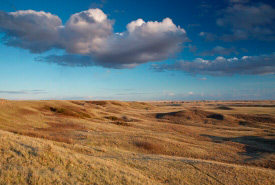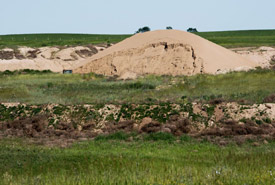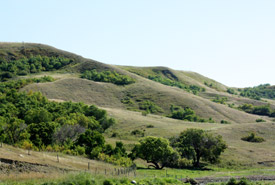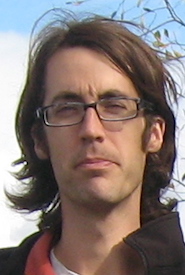Flattening a prairie province's misconceptions

Missouri Coteau, Saskatchewan (Photo by Branimir Gjetvaj)
Growing up, I learned a lot about my home province, Saskatchewan, from my fellow Canadians. I was told that the land — limited to fields of wheat and canola — is tabletop flat and devoid of trees. I heard that our towns, villages and hamlets are isolated and disconnected. I learned that the ease with which you draw the outline of a province is directly correlated to its beauty and grace; something Saskatchewan apparently lacked.
And then I moved out of the province and realized that a few of those ideas planted in my brain by jokes on the radio and family I visited in southern Manitoba might not have been the whole picture. The ranchers I worked with in interior BC were much more isolated than any farmer in Saskatchewan. The homes I helped protect from Manitoba’s flood of the century could have benefited from a bit more topographic relief. What I am left with after hearing these misconceptions over and over is what it means to be connected to people with a passion for the land. People who live here in Saskatchewan like it and want to help conserve it. I am amazed by the people I meet who share similar conservation values.

Sand dunes in Saskatchwan (Photo by Gail F. Chin)
One day while dropping off my co-worker off at her decidedly hippy cousin Monique’s place on the banks of the North Saskatchewan River, I met a friend of a friend. What I mean is that my co-worker’s cousin was married to a woman who was friends with my second cousin. I found out when I happened to mention that I was heading home to Osler. “Oh, do you know Clint? How about Sarah?” Yes, on both accounts. Further along in the conversation, I recounted my chance conversation with a ferry operator the previous week. (Okay, it wasn’t chance. He doesn’t see many people a day. Take a ferry ride in Saskatchewan and you too will have a chance conversation with a ferry operator.) That was their neighbour, it turned out.
I was astounded and remarked at this amazing coincidence and commented how much I was enjoying working with so many wonderful people in this province. Monique nearly stopped canning sauerkraut to set me straight: “It’s not a coincidence. You meet good people when you are doing the things you are supposed to do in the places you are supposed to do them.”

Fairy Hill, SK (Photo by NCC)
I was thinking of that story and how it changed my perspective during a natural areas conservation planning (NACP) workshop we held in Hafford, Saskatchewan, the other day. As the project lead it was my job to facilitate discussion about what our NACP, the conservation plan we’d all agreed to spend the next two days discussing, should aim to conserve in the area, what might be impacting those biodiversity targets, and how to counter them with strategies and activities by ourselves and our partners. This plan would help determine how the Nature Conservancy of Canada (NCC) would be a neighbour to the people that lived and worked in the area.
We had spent the morning introducing topics and terms, grappling with different rankings of threats and challenging our assumptions about how conservation could or should work in the area. Pretty heady stuff and it was nearly lunch, which meant that I was done thinking about biodiversity targets, the threats to their conservation and the activities needed to improve things. Instead, I asked the table of forage specialists, water techs and landowners where they were from, you know, originally. One woman claimed to be from Moose Jaw. I didn't believe her and asked where she was really from. I was not surprised to hear she grew up on a ranch south of Moose Jaw near my friend's place. Carissa went next, similarly claiming to be from a town with the same grandeur as “The Jaw,” and again I called her on it. This is how we found out that the forage specialist’s sister was Carissa’s teacher way back when.
Small world? Coincidence? I don’t know and it really doesn’t matter to me. All I know is that when you get good people together in the same room, they generate good conversation and ideas, the specifics of which I could not have anticipated beforehand. So, when people ask me why they should come to one of my NACP planning workshops, I think I might just tell them because we’re probably cousins or played volleyball against each other or some other nonsense, because something weirder will probably be true.
I will tell them that when I leave the office, I meet people who are doing things, and together we come up with unexpected creative, joint solutions with other problem-solvers they haven’t met yet.


